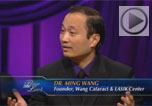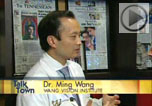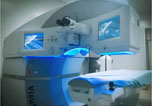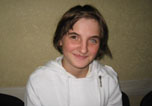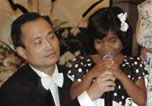- Over 55,000 LASIK and cataract procedures (including on over 4,000 doctors)
- The FIRST center in TN to offer Laser Cataract Surgery
- Introduced bladeless all-laser LASIK to the state
- Implanted the state's first FOREVER YOUNG™ Lens
- The first surgeons in the US to perform a new Intacs surgery to treat keratoconus
- Helped patients from 40 states and 55 countries
- International referral center for cataract surgery and LASIK complications
- Read Dr. Wang's book: LASIK Vision Correction
Why did you decide to have LASIK? Why did you choose Dr. Wang? How has your life changed since your LASIK procedure?
What is your advice for people considering LASIK?
Click to read more
| Article Library | Print This Page |
Wang Debuts LenSx Laser Cataract Surgery in Tennessee

By: CINDY SANDERS
Posted: Thursday, February 9, 2012 8:45 am
New Technology Allows for a More Precise Phaco-Free, All-Laser, 3D Procedure
Each year, more than three million cataract surgeries are performed in the United States … five times the number of LASIK procedures. Yet, unlike refractive surgery that transitioned from blade (radial keratotomy) to laser (LASIK) 20 years ago, cataract surgery had remained largely unchanged during that same time period … until very recently.
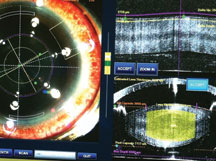
The LenSx shows both the surface of the eye and a side view to allow surgeons to evaluate the appropriate depth for cuts.
A cataract is the opacification of the lens inside the eye. Traditional cataract surgery uses blade and ultrasonic phacoemulsification to mechanically cut and emulsify the cataractous lens. In the past 20 years, despite refinements made to the phaco technology, the safety and precision of cataract surgery has been mainly limited by the use of the phaco probe itself, which acts as a tiny jackhammer on the lens. Risks include damage to eye structures surrounding the lens and loss of sight.
In addition, visual outcome is also affected by the shape and location of the anterior lens capsular opening (capsulorhexis), which is traditionally created using a blade and needles. Precise circular shape and centration of capsulorhexis is critical to lens position and vision, but it is difficult to achieve during surgery with the human hand.
Last year, Alcon’s LenSx laser received full FDA approval as the first laser system for cataract surgery. To date, of the 8,000 cataract surgery centers in the country, Alcon has selected 25 leading centers to receive LenSx and debut the laser technology. Wang Vision 3D Cataract & LASIK Center led by Ming Wang, MD, PhD, was among this first group, receiving the LenSx laser last November.
On Dec. 1, 2011, Wang performed Tennessee’s first LenSx laser cataract surgery. In addition, he also performed the world’s first 3D laser cataract surgery using the TrueVision image-guided, high-definition microsurgical system, which he helped customize and refine.
“We are proud to be the first in the state, as well as the first in the eight states surrounding Tennessee to offer laser cataract surgery,” said Wang, who holds both a Harvard medical degree and a doctorate in laser physics from MIT.
Wang, who is also a clinical associate professor of Ophthalmology for the University of Tennessee, explained that in removing a cataract, there are three steps — the corneal incision (exterior corneal cut for entry), capsulorhexis, and lens fragmentation. Of these steps, capsulorhexis is the most challenging. Using a computer image-guided laser instead of a blade, surgeons now are able to significantly improve the precision of the capsulorhexis. A recent study presented at the American Academy of Ophthalmology annual meeting showed laser capsulorhexis achieved perfect diameter accuracy in nearly 100 percent of cases as opposed to less than 10 percent with manual blade.
“And, for the first time, a surgeon is able to get a cross-sectional view of the eye from the side,” Wang said, noting this allows a surgeon to accurately determine the depth of the surgical maneuver. “Before the advent of this laser imaging technology, as a surgeon, I could only look straight down and see the top of an eye, but there was no way for me to come around and see from the side … the cross section of the lens that I was operating on. So as surgeons, we sometimes just had to guess and feel how deep we were going, all the while holding sharp surgical instruments in our hands inside the eye.”
He continued, “But now, with the computer-guided laser OCT imaging system, I’m able to see the cross section of the lens so I can determine precisely how deep the laser has reached in the course of the surgery.” Wang added, “A human lens has a very thin capsule. If you go too deep with a sharp instrument, you can damage the capsule, and the lens can then fall back in the eye, causing retinal and other complications.”
The new technology also allows surgeons to correct astigmatism with the laser so patients enjoy significantly improved vision after surgery. In addition to Alcon, LensAR, OptiMedica and Technolas are three other major players developing laser cataract systems at this time.
While ‘laser cataract surgery’ is being widely publicized, Wang said some surgeons use laser to perform only the initial step in cataract surgery, the corneal incision. In those cases, the laser does not actually go into the eye and hit the lens itself. “Hence, these procedures really are not intraocular cataract lens surgery but rather are extraocular corneal procedures,” he said.
Recently, Wang developed another new surgical technique, phaco-free, all-laser cataract surgery, and he is currently applying for a U.S. patent. “We now actually are able to, for the first time, completely eliminate the use of the ultrasonic phaco probe altogether and thus remove this major risk factor for complications in cataract surgery,” he explained.
Wang is now training other surgeons from around the country in using the new laser surgical technique and plans to host a teaching course next month in Nashville. He said his LenSx laser is an “open platform” system so all area surgeons have access to it.
“The laser cataract surgery is the single most significant innovation in cataract surgery technology in the last 20 years and is the most state-of-the-art technology that we have today, and I want to make it available to all surgeons so all patients who are candidates medically can benefit from it,” Wang concluded.
For information on the March course or individual training options, go online to www.WangCataractLASIK.com.
Our new texbooks
A 501c(3) charity that has helped patients from over 40 states in the US and 55 countries, with all sight restoration surgeries performed free-of-charge.



